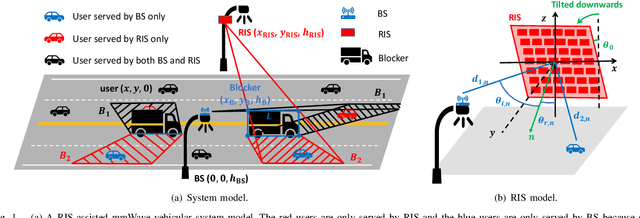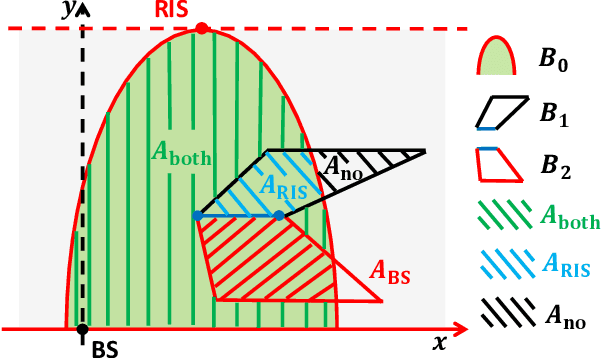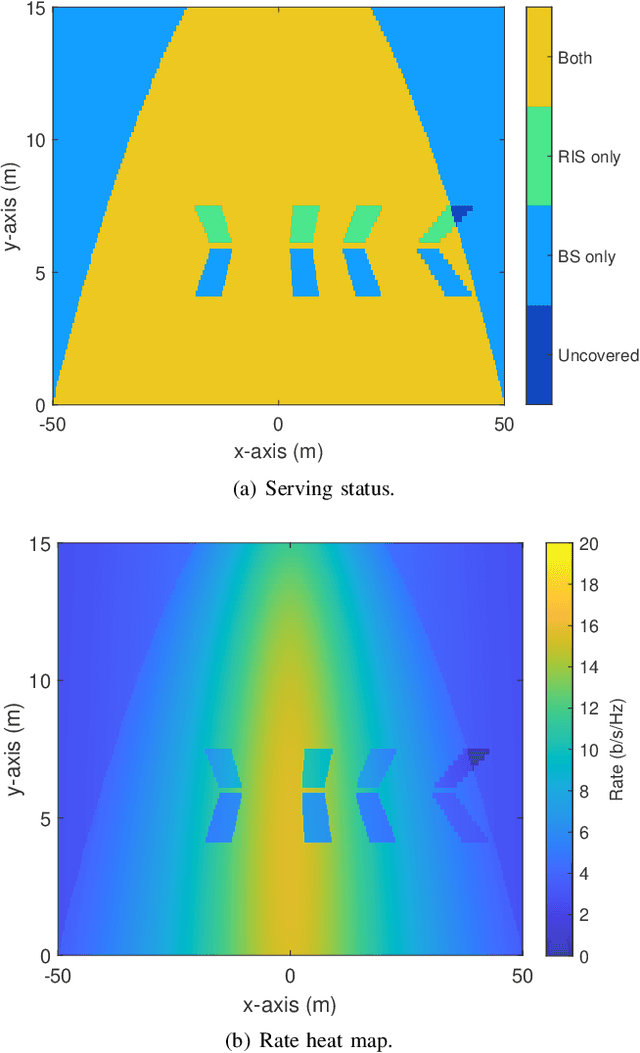Optimizing the Deployment of Reconfigurable Intelligent Surfaces in MmWave Vehicular Systems
Paper and Code
May 31, 2022



Millimeter wave (MmWave) systems are vulnerable to blockages, which cause signal drop and link outage. One solution is to deploy reconfigurable intelligent surfaces (RISs) to add a strong non-line-of-sight path from the transmitter to receiver. To achieve the best performance, the location of the deployed RIS should be optimized for a given site, considering the distribution of potential users and possible blockers. In this paper, we find the optimal location, height and downtilt of RIS working in a realistic vehicular scenario. Because of the proximity between the RIS and the vehicles, and the large electrical size of the RIS, we consider a 3D geometry including the elevation angle and near-field beamforming. We provide results on RIS configuration in terms of both coverage ratio and area-averaged rate. We find that the optimized RIS improves the average averaged rate fifty percent over the case without a RIS, as well as further improvements in the coverage ratio.
 Add to Chrome
Add to Chrome Add to Firefox
Add to Firefox Add to Edge
Add to Edge